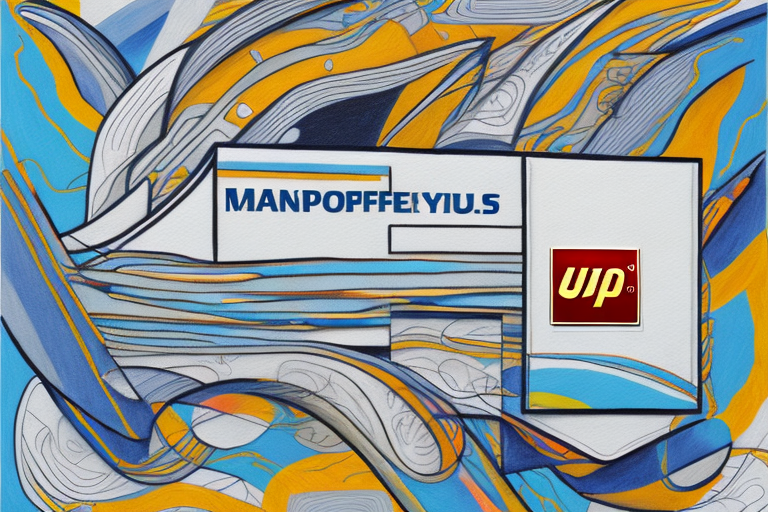How to Ship Paintings Using FedEx Rates
If you're an artist or collector, ensuring that your paintings arrive safely at their destination is paramount. Shipping a painting can be challenging, but with the right carrier and proper care, you can transport your masterpiece securely. In this article, we'll explore how to ship paintings using FedEx rates, best practices for packing, packaging options, tracking your shipment, and more.
Why FedEx is the Best Choice for Shipping Paintings
When it comes to shipping paintings, FedEx stands out as an excellent choice. With its expansive global network and renowned customer service, FedEx offers reliable and secure transportation services to ensure your artwork arrives safely and on time. According to FedEx's 2023 annual report, they handle over 6.5 million daily shipments worldwide, underscoring their capacity and reliability for handling valuable items like paintings.
FedEx provides a variety of shipping options, ranging from overnight delivery to ground transportation, allowing you to select the service that best fits your timeline and budget. Additionally, FedEx offers specialized packaging services tailored for artworks, employing high-quality materials and expert techniques to protect your paintings during transit.
For more details on FedEx's services for shipping art, visit their Visual Arts Shipping page.
Understanding Different Types of Paintings for Shipping
Before packaging your painting for shipping, it's crucial to understand the specific requirements based on the type of artwork. Different mediums and structures necessitate different handling methods:
- Oil Paintings: These should be stretched and framed before shipping. Ensure the frame is sturdy and securely attached to prevent any movement.
- Watercolor Paintings: These artworks should be matted and placed between two sturdy backings to protect against moisture and bending.
- Fragile Paintings: Artworks with delicate brushwork or glass-mounted pieces require extra cushioning and protection to prevent damage during transit.
Additionally, the size of the painting plays a significant role in determining the packaging method. Larger paintings may require custom crates or specialized packaging to ensure their safe transport. It's also essential to consider the destination's climate; paintings shipped to regions with high humidity or extreme temperatures may need additional protection to prevent warping or cracking.
For a comprehensive guide on preparing different types of paintings for shipping, refer to the Artwork Shipping Guide.
Preparing Your Painting for Shipping: Step-by-Step Guide
Proper preparation is key to ensuring your painting arrives in pristine condition. Follow these steps to prepare your artwork for shipping:
- Clean the Painting: Begin by gently cleaning the painting with a soft, dry brush to remove any dust or debris.
- Protect the Surface: Cover the face of the painting with glassine paper or acid-free tissue paper to shield the artwork from scratches and moisture.
- Wrap the Painting:
- If unframed, wrap the painting in multiple layers of bubble wrap and secure it with packing tape.
- If framed, remove any hardware like wire hangers and wrap both the frame and painting in several layers of bubble wrap for added protection.
- Boxing: Place the wrapped painting in a sturdy cardboard box that accommodates the artwork and any additional packing materials like foam padding or packing peanuts.
- Climate Considerations: If shipping to areas with extreme temperatures or high humidity, include desiccant packets or insulated packaging to protect the painting from environmental factors.
- Insurance: Purchase shipping insurance to cover the full value of your painting in case of damage or loss during transit.
Following these steps meticulously can significantly reduce the risk of damage during shipping. For more detailed instructions, consult FedEx's Packaging Guidelines.
Choosing the Right Packaging Materials for Your Painting
Selecting appropriate packaging materials is essential to safeguard your painting during transit. Here's a list of recommended materials:
- Bubble Wrap: Provides cushioning and protection against impacts.
- Glassine Paper or Acid-Free Tissue Paper: Protects the painting's surface without causing damage.
- Sturdy Cardboard Box: Acts as the primary container, offering structural support.
- Foam Padding or Packing Peanuts: Fills any empty spaces within the box to prevent movement.
- Strong Packing Tape: Secures the packaging materials firmly.
- Label Maker or Permanent Marker: Ensures clear and durable labeling of the package.
When choosing bubble wrap, opt for a size and thickness that provides ample cushioning. Consider double-layered bubble wrap for added protection, especially for high-value or fragile paintings. For larger or heavier paintings, a wooden crate may be more appropriate than a cardboard box, offering enhanced stability and protection.
For more information on selecting packaging materials, visit the Packaging Guidelines for Artwork.
How to Calculate the Cost of Shipping Your Painting with FedEx Rates
Determining the cost of shipping your painting with FedEx is straightforward using their online shipping calculator. Follow these steps:
- Visit the FedEx Shipping Calculator.
- Enter the dimensions and weight of your package.
- Select the shipping option that aligns with your delivery timeline and budget.
- Review the estimated cost provided by the calculator.
The shipping cost depends on several factors, including:
- Destination: International shipments typically cost more than domestic ones.
- Shipping Speed: Expedited services like overnight delivery incur higher fees.
- Additional Services: Options such as insurance, signature confirmation, and specialized handling will affect the total cost.
Proper packaging can also influence shipping costs. Efficiently packed paintings may require less material and occupy less space, potentially reducing costs. For detailed pricing information, refer to FedEx's Compare Services page.
Tips for Packing and Labeling Your Painting for Shipment
Effective packing and labeling are crucial to the safe delivery of your painting. Here are some essential tips:
- Secure the Painting: Ensure that the painting is firmly secured within the box to prevent movement during transit.
- Clear Labeling: Clearly label the package with both your address and the recipient's address. Include any special handling instructions like "Fragile" or "Handle with Care."
- Packing Slip or Invoice: Include a packing slip or invoice inside the package for reference and tracking purposes.
- Customs Forms: For international shipments, complete the necessary customs forms accurately to avoid delays.
Use high-quality, sturdy boxes and reliable packing materials to protect your painting. Avoid using materials that could harm the artwork, such as newspaper, which may deteriorate over time. Instead, opt for materials like foam corners and acid-free tissue paper that provide protection without risk of damage.
For comprehensive packing and labeling guidelines, consult FedEx's Cargo Packing Guidelines.
How to Track Your Package During Shipping with FedEx
FedEx offers robust tracking features to keep you informed about your package's status throughout its journey. Here's how to track your shipment:
- Tracking Number: After shipping, you'll receive a tracking number. Enter this number on the FedEx Tracking page to monitor your package's progress.
- Mobile App: Use the FedEx mobile app to receive real-time updates and notifications directly to your smartphone.
- Email and Text Notifications: Sign up for email or text alerts to receive updates on your package's status, including pick-up, transit, and delivery notifications.
These tracking tools provide transparency and assurance, allowing you to plan accordingly for the arrival of your painting. Additionally, FedEx's Customer Support is available to assist with any tracking-related inquiries.
Common Mistakes to Avoid When Shipping Paintings with FedEx Rates
Shipping paintings requires attention to detail to prevent common pitfalls that can lead to damage or loss. Avoid these mistakes:
- Inadequate Packaging: Using weak or unsuitable packaging materials can result in damage during transit. Always use high-quality materials specifically designed for shipping artwork.
- Excess Movement: Leaving empty space in the box allows the painting to shift, increasing the risk of impact damage. Use foam padding or packing peanuts to fill any gaps.
- Improper Labeling: Ensure that all labels are clear and accurate. Mislabeling can lead to delivery delays or misplacement.
- Lack of Insurance: Not insuring your shipment leaves you vulnerable to financial loss in case of damage or theft. Always purchase adequate insurance coverage for valuable artworks.
Additionally, be mindful of environmental factors such as extreme temperatures. Selecting a shipping option that offers temperature-controlled environments can prevent damage caused by heat or cold. When shipping internationally, familiarize yourself with the destination country's customs regulations to avoid delays or additional fees.
For more information on avoiding shipping mistakes, refer to FedEx's Shipping Guide.
How to File a Claim with FedEx in Case of Damage or Loss During Shipment
Despite best efforts, sometimes shipments can be damaged or lost. If this occurs, here's how to file a claim with FedEx:
- Report Immediately: Contact the FedEx Claims Department as soon as you notice damage or loss. For damaged shipments, you must file a claim within 21 days of the delivery date. For lost shipments, the claim must be filed within 9 months of the shipment date.
- Provide Documentation: Gather all necessary documentation, including your tracking number, proof of value (like invoices or receipts), and photographs of the damage.
- Submit the Claim: Claims can be filed online through the FedEx Claims Portal or by contacting customer service directly.
- Investigation: FedEx will review your claim and may request additional information or conduct an investigation.
- Resolution: If your claim is approved, FedEx will issue compensation covering the cost of the item, shipping fees, and any related expenses.
Ensure that all steps are followed meticulously to facilitate a smooth claims process. Keeping detailed records and photographs can significantly support your claim's validity.
For detailed instructions on filing a claim, visit FedEx's Claims Information Page.
Alternative Options for Shipping Paintings: Pros and Cons Compared
While FedEx is a reliable option for shipping paintings, exploring alternative carriers and shipping methods can help you find the best fit for your specific needs. Here's a comparison of some alternatives:
- USPS:
- Pros: Typically offers cheaper rates for domestic shipments.
- Cons: Slower delivery times and less comprehensive tracking compared to FedEx.
- Specialized Art Shipping Companies:
- Pros: Expertise in handling fragile and valuable items with specialized packaging and handling.
- Cons: Generally more expensive than standard carriers.
- Local Couriers:
- Pros: Ideal for short distances with potentially faster delivery times.
- Cons: May lack the reliability and tracking capabilities required for valuable shipments over longer distances.
- Freight Carriers:
- Pros: Cost-effective for shipping multiple or large paintings simultaneously.
- Cons: Limited tracking and insurance options compared to FedEx.
When choosing an alternative shipping method, consider factors such as cost, reliability, track record, and the specific needs of your shipment. Investing in specialized packaging materials, regardless of the carrier, is crucial to ensure the safe arrival of your artwork.
For a deeper comparison of shipping carriers, refer to the Art Shipping Comparison Guide.
Best Practices for Insuring Your Painting During Shipment with FedEx
Insurance provides financial protection against potential losses during shipping. Here are best practices to ensure your painting is adequately insured with FedEx:
- Accurate Valuation: Ensure that your painting is accurately valued on the shipping label. Underestimating the value can result in insufficient coverage in case of damage or loss.
- Additional Insurance: Consider purchasing additional insurance beyond the standard coverage offered by FedEx, especially for high-value artworks.
- Documentation: Take clear photographs of your painting before shipping. This documentation can be invaluable when filing a claim for damages or loss.
- Review Policy Terms: Understand the terms and conditions of the insurance policy, including what is covered and any exclusions that may apply.
By following these best practices, you can minimize financial risks associated with shipping your paintings. For more information on insurance options, visit FedEx's Shipping Insurance page.
Remember, investing time in proper packing, selecting the right carrier, and securing adequate insurance can provide peace of mind and ensure your artwork reaches its destination safely. Happy shipping!






















